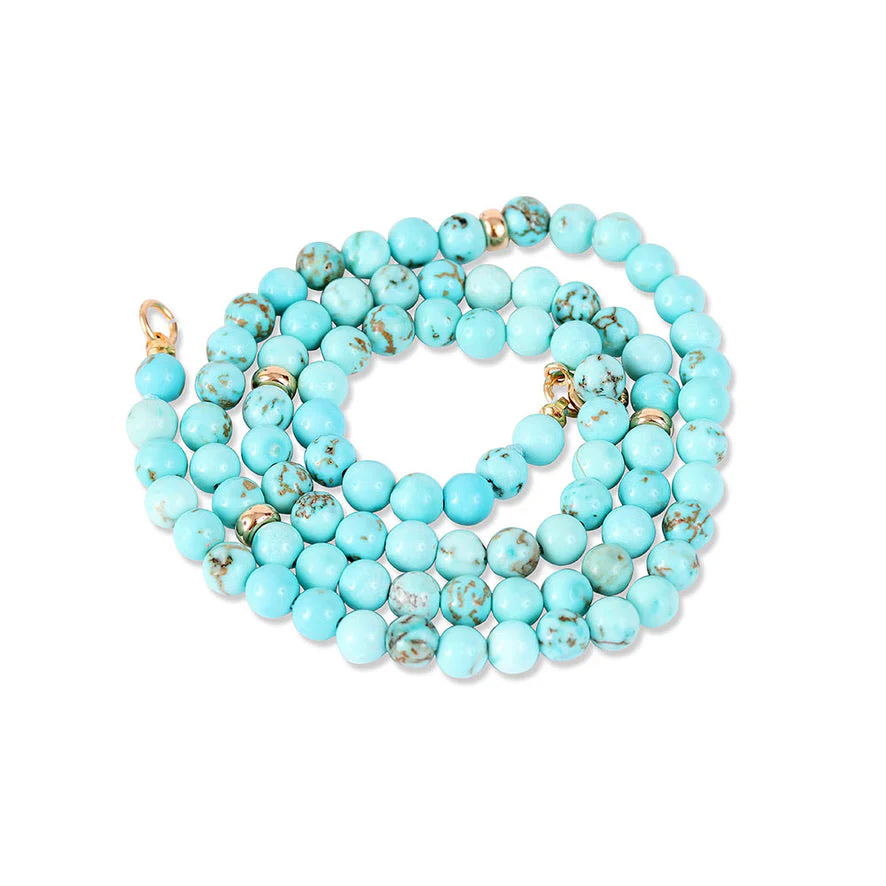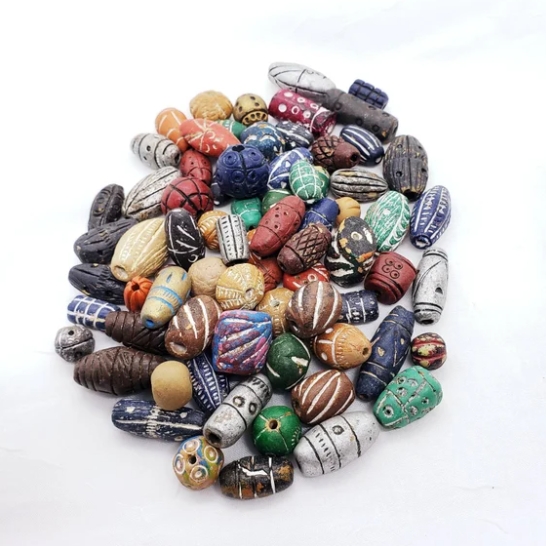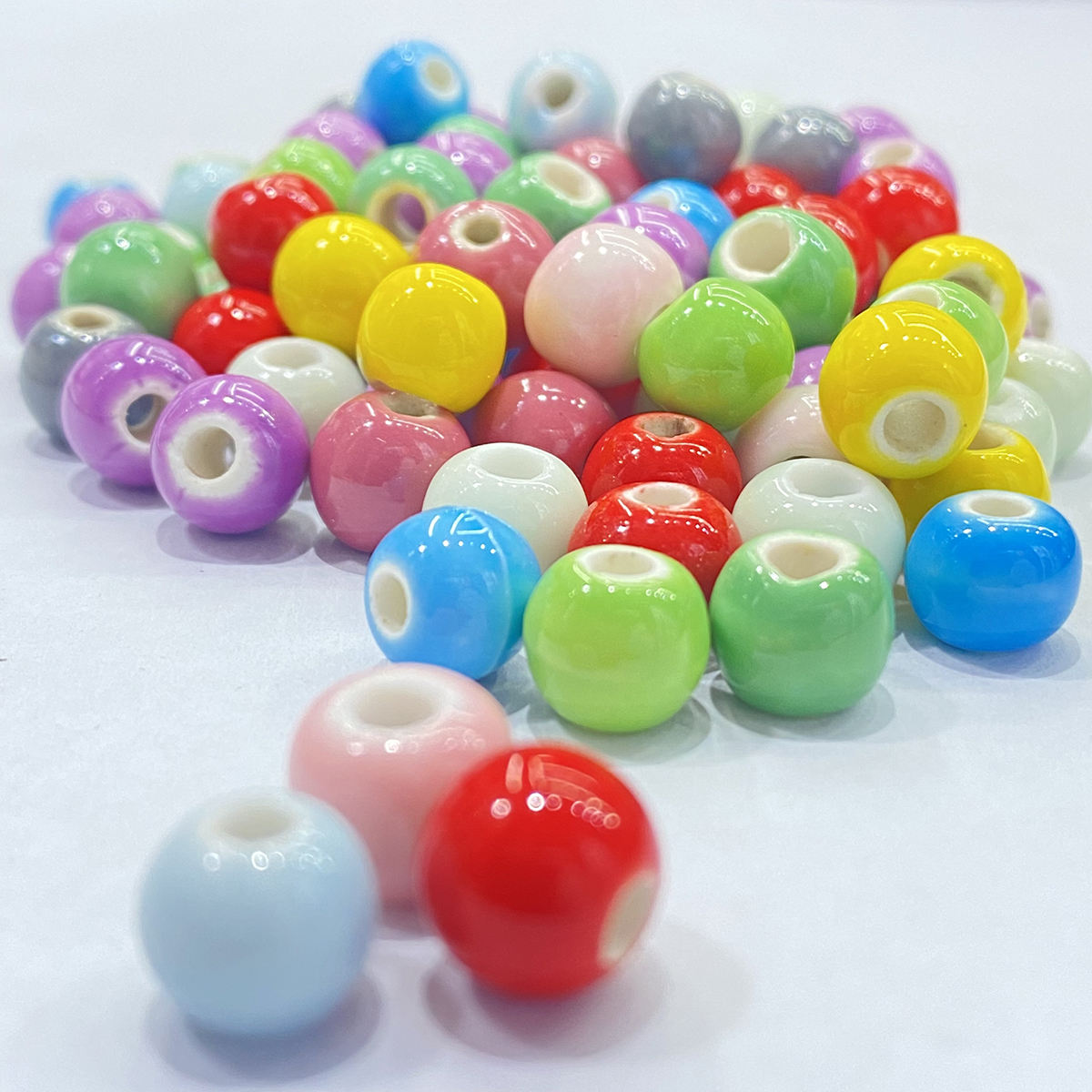When it comes to creating stunning necklaces and bracelets, the size of your beads can make all the difference. Large beads have become increasingly popular in jewelry making, offering bold statements and unique designs. But are they always the right choice? In this comprehensive guide, we’ll explore the pros and cons of using large beads in your jewelry creations, helping you make informed decisions for your next project. Whether you’re a seasoned jeweler or a beginner enthusiast, this article will provide valuable insights into working with beads of all sizes.
Why Should You Consider Using Large Beads in Your Jewelry?
Large beads can be a game-changer in your jewelry designs. They offer several advantages:
- Visual Impact: Large beads naturally draw the eye, making your jewelry pieces stand out.
- Versatility: They can be used as focal points or combined with smaller beads for contrast.
- Comfort: Fewer beads are needed, potentially making necklaces and bracelets lighter.
However, it’s essential to consider the overall design and purpose of your jewelry when deciding on bead size. Large beads might not be suitable for every project, but when used correctly, they can create truly stunning pieces.
How Do Large Beads Affect the Weight of Necklaces and Bracelets?
The weight of your jewelry is a crucial factor to consider, especially for necklaces and bracelets that will be worn for extended periods. Large beads can significantly impact the overall weight of your piece:
- Material Matters: Large glass or stone beads will naturally be heavier than plastic or wooden ones of the same size.
- Distribution: Spreading large beads evenly throughout the design can help balance the weight.
- Comfort Considerations: A heavier piece might be less comfortable for everyday wear.
When working with large bracelet beads, consider mixing them with lighter materials or spacing them out with smaller beads to maintain a comfortable weight.
What Are the Best Stringing Materials for Large Beads?
Choosing the right stringing material is crucial when working with large beads:
- Beading Wire: Offers strength and flexibility, ideal for heavier beads.
- Leather Cord: Provides a rustic look and is suitable for larger hole beads.
- Silk Thread: Great for knotting between beads but may not be strong enough for very heavy pieces.
Remember, the size of the bead holes will also influence your choice of stringing material. Always ensure your chosen material can pass through the bead holes easily while providing adequate strength.
How Do Large Beads Impact the Overall Design of Your Jewelry?
Large beads can dramatically influence the aesthetics of your jewelry:
- Focal Points: Use a single large bead as a centerpiece in your design.
- Rhythm and Pattern: Alternating large and small beads creates visual interest.
- Color Impact: Large beads allow for bolder color statements.
When designing with large beads, consider the balance and proportion of your piece. A necklace with all large beads might be overwhelming, while strategically placed large beads can enhance a design beautifully.
Are There Any Challenges in Working with Large Beads?
While large beads offer many benefits, they also come with some challenges:
- Stringing Difficulties: Larger beads may require special techniques or tools for stringing.
- Design Limitations: Some clasps or findings may look disproportionate with very large beads.
- Wear and Tear: Heavier beads can put more stress on stringing materials and clasps.
To overcome these challenges, practice proper stringing techniques and choose appropriate materials for your large bead projects.
How Can You Incorporate Large Beads into Delicate Designs?
Mixing large beads with more delicate elements can create stunning contrasts:
- Use large shaped beads as focal points among smaller, more delicate beads.
- Create a gradient effect by gradually increasing bead size towards a central large bead.
- Pair large beads with fine chains or delicate pendants for an interesting juxtaposition.
The key is to find a balance that complements both the large beads and the more delicate components of your design.
What Types of Jewelry Styles Work Best with Large Beads?
Large beads lend themselves well to certain jewelry styles:
- Statement Necklaces: Bold, eye-catching pieces that make a strong fashion statement.
- Chunky Bracelets: Perfect for stacking or wearing as standalone pieces.
- Bohemian or Ethnic-Inspired Designs: Large beads often feature in these eclectic styles.
- Modern Minimalist Pieces: A few well-placed large beads can create a sleek, contemporary look.
Consider the overall style you’re aiming for when deciding whether to incorporate large beads into your design.
How Do You Choose the Right Size Beads for Different Body Types?
Selecting bead sizes that complement different body types is crucial for creating flattering jewelry:
- Petite Frames: Smaller to medium-sized beads often work best, but don’t be afraid to experiment with a few larger beads as accents.
- Larger Frames: Can generally carry off larger beads more easily, especially in necklaces.
- Neck Length: Consider how the size of beads will affect where a necklace sits on the neck and chest.
Remember, these are general guidelines. Personal style and preference should always be the ultimate deciding factors.
What Are Some Creative Ways to Use Large Beads in Jewelry Making?
Get inspired with these creative ideas for using large beads:
- Create a single-strand necklace with graduated large beads.
- Design a multi-strand bracelet mixing large and small beads.
- Use large beads as spacers between sections of smaller beads.
- Craft a pair of statement earrings using just one or two large beads each.
Don’t be afraid to think outside the box and experiment with unconventional combinations of large beads and other jewelry elements.
How Do You Care for Jewelry Made with Large Beads?
Proper care will ensure your large bead jewelry stays beautiful:
- Store pieces separately to prevent scratching or tangling.
- Clean gently with a soft cloth, avoiding harsh chemicals.
- Check clasps and stringing materials regularly for wear and tear.
- Restring as needed to maintain the integrity of your pieces.
With proper care, your large bead jewelry can be enjoyed for years to come.







